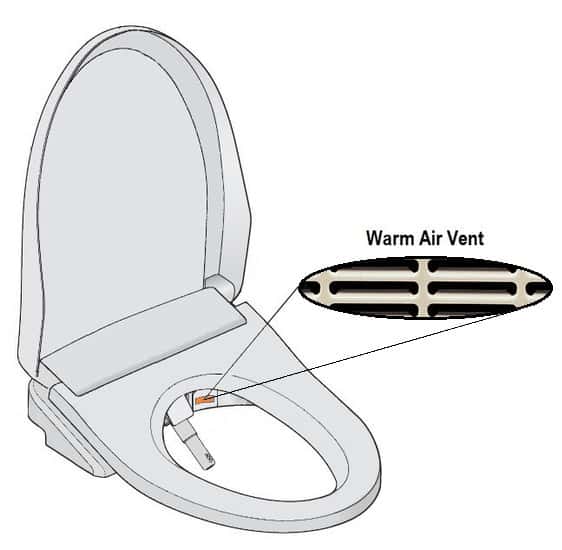Ah, the bidet! A splash of fresh water. Feels good, right? But wait! You’re sopping wet now. How do you dry after using a bidet? It’s a pickle, isn’t it?
You’ve done the deed. Now you’re stuck with a soggy bottom. You’re not alone. We’ve all been there, buddy.
The good news? There’s a fix for your wet behind! We’re going to chat about traditional methods like towels and toilet paper. But that’s not all! We’ve got some modern solutions too, like built-in air dryers.
Want to save the planet? Sure you do! We’ll dish about eco-friendly alternatives like reusable cloths and natural fibers.
Now, let’s not forget about hygiene. Best practices? We’ve got ‘em. What about waste management? Yep, we’re covering that too.
So buckle up, get comfy, and let’s get started. Up next, we’re chatting traditional drying methods. So stick around, cause it’s about to get dry in here!
Traditional Drying Methods after bidet use
Ah, the classics! When it comes to drying off post-bidet, many folks still swear by the tried-and-true methods of towels and toilet paper.
Towels: The Luxurious Choice

Using a dedicated bidet towel offers a touch of luxury. Soft, absorbent, and always at the ready, these towels are often made of high-quality materials like cotton or bamboo.
They’re gentle on the skin and can be washed and reused, making them a sustainable choice. But remember, hygiene is key! Make sure to wash them regularly and keep ’em separate from other household towels.
Toilet Paper: Quick and Convenient

For those in a hurry or not into the idea of a bidet towel, toilet paper is the go-to. It’s quick, convenient, and gets the job done.
However, it’s not the most eco-friendly choice. Over time, the use of toilet paper can add up, both in terms of cost and environmental impact.
Plus, let’s be real, it doesn’t offer the same level of comfort as a soft towel.
But no matter which method you choose, the goal is the same: to feel clean, dry, and refreshed.
So, whether you’re team towel or team TP, just make sure you’re drying off in a way that feels right for you.
Modern Solutions of drying after bidet use: Built-in Air Dryers
Welcome to the future of post-bidet drying! Gone are the days of solely relying on towels and TP. Enter the world of built-in air dryers.
The Magic of Air Dryers

Built-in air dryers are the epitome of convenience. With just a press of a button, you can have a gentle stream of warm air doing the drying for you.
No more soggy bottoms or reaching out for a towel. It’s all about hands-free, hassle-free drying. And guess what? It’s not just about comfort.
These air dryers are a win for hygiene too. No touch means fewer germs, and that’s always a good thing.
Efficiency and Comfort Combined
These dryers are designed for efficiency. They dry you off in a jiffy, ensuring you’re not left waiting. And the best part? Most of them come with adjustable temperature settings. So whether you like it warm and toasty or just a gentle breeze, there’s something for everyone.
A Sustainable Choice
Remember those trees we talked about saving? Well, with air dryers, you’re doing just that. No more excessive use of toilet paper. It’s a step towards a greener, more sustainable future. And let’s face it, it feels pretty darn futuristic too.
Eco-friendly Alternatives of drying after bidet use: Reusable Cloths and Natural Fibers
Hey, Earth-lover! Ready to take your bidet game to the next level? Let’s talk about some green solutions that’ll make Mother Nature smile.
Reusable Cloths: The Zero-Waste Wonder

Reusable cloths are the superheroes of the bidet world. Made from materials like cotton or bamboo, these cloths can be washed and reused. That’s right, no more tossing and trashing. Just wash, dry, and they’re ready for action again. It’s a win for your wallet and the planet.
Tip: Keep a small basket near the bidet for used cloths. Wash them separately to maintain hygiene.
Natural Fibers: Gentle on You and the Earth
Natural fibers like hemp and organic cotton are gentle on your skin and the environment. These materials are grown without harmful chemicals, so they’re a natural choice for those looking to reduce their environmental footprint.
Did you know? Hemp grows quickly and requires less water than cotton. It’s a sustainable superstar!
Biodegradable Toilet Paper: A Greener Choice

If reusable cloths aren’t your thing, don’t worry. There’s still a way to go green. Biodegradable toilet paper is made from recycled materials and breaks down quickly. It’s a step towards a more sustainable future without giving up the convenience of disposable paper.
The Bigger Picture: Why It Matters
Going green with your bidet drying methods isn’t just a trend. It’s a choice that reflects a commitment to sustainable living. By choosing reusable cloths or natural fibers, you’re reducing waste, conserving resources, and making a positive impact on the environment. And let’s be real, it feels good to do good.
Hygiene Considerations: Best Practices for Drying after bidet use
Hey there, hygiene hero! You’ve got the bidet basics down, but what about keeping things clean and fresh? Let’s dive into the nitty-gritty of hygiene when drying after bidet use. It’s not just about feeling dry; it’s about feeling clean and confident. Ready? Let’s go!
The Right Tools: Choosing Hygienic Materials
Whether you’re team towel or team air dryer, the right tools make all the difference.
- Towels: Opt for materials that are gentle on the skin and easy to wash. Keep ’em separate from other household towels, and wash them regularly.
- Air Dryers: Look for adjustable settings to control the temperature and flow. A gentle breeze is all you need to get the job done without spreading germs.
The Right Technique: How to Dry Properly
Drying after bidet use isn’t rocket science, but a little technique goes a long way.
- Pat, Don’t Rub: Be gentle with your skin. Patting dry is the way to go. Rubbing? That’s a no-no.
- Direction Matters: Start from the front and move backward. Trust us, it’s the way to go.
The Right Mindset: Understanding the Importance of Hygiene
Hygiene isn’t just about avoiding germs. It’s about feeling good and taking care of yourself. Understanding the importance of hygiene helps you make better choices and enjoy the bidet experience to the fullest.
From towels to techniques, we’ve covered the best practices for keeping things hygienic when drying after bidet use. Remember, it’s not just about drying off; it’s about doing it the right way. So go ahead, embrace the bidet lifestyle, and do it with confidence and cleanliness.
What Do You Do With the Waste From Drying After Using a Bidet?
Alright, eco-warrior, you’ve got the lowdown on drying after bidet use. But here’s a curveball: what about the waste? Yep, we’re talking about those used towels, cloths, and, well, toilet paper. Let’s break it down and see how to handle the aftermath in an eco-friendly way.
Towel Tales: Handling Used Bidet Towels
So you’ve embraced the luxury of bidet towels. Good on ya! But what next?
- Regular Rotation: Keep a stash of bidet towels handy. Rotate them out, so you always have a fresh one.
- Separate Baskets: A dedicated laundry basket for bidet towels keeps things organized. And remember, wash ’em separately!
The TP Trail: Dealing with Used Toilet Paper
Toilet paper’s convenient, but it does leave behind waste. Here’s the scoop:
- Biodegradable is Best: If you’re using TP, opt for the biodegradable kind. It breaks down faster, leaving a smaller footprint.
- Composting: Some folks even compost their TP. But do your research first. Not all TP is compost-friendly!
Cloth Chronicles: Managing Reusable Cloths
Reusable cloths are the eco-champion of bidet drying. But they need a bit of TLC.
- Wash Regularly: Like bidet towels, these bad boys need regular washing. Keep ’em fresh and ready for action.
- Dedicated Drying: After washing, hang them out to dry. Sunlight’s a natural disinfectant, so let Mother Nature do her thing.
The Bigger Picture: Why Waste Management Matters
Handling waste might seem like a small thing. But it’s part of a bigger picture. It’s about reducing our environmental impact and making choices that benefit our planet. Every little bit helps. And when it comes to bidet drying, you’ve got options. So whether you’re team towel, team TP, or team cloth, make sure you’re handling the waste in an eco-friendly way.
Wrapping Up: The Art of Drying After Bidet Bliss
Drying off after that refreshing bidet experience can be an art in itself. From the plush embrace of a cotton towel to the futuristic finesse of an air dryer, the choices are aplenty. But beyond the luxurious feeling, it’s the eco-friendly practices and the nod to hygiene that truly sets the stage for a blissful bidet routine. As you navigate this delightful post-bidet ritual, remember, it’s not just about the drying – it’s about cherishing every droplet while nurturing our planet and ourselves. So, dear reader, next time you step off that bidet, stand tall, pat down, and revel in the fresh, dry, and sustainable embrace of your chosen method. And hey, got a favorite drying trick up your sleeve? Share it with our community – after all, when it comes to drying, the more the merrier! 🌱🧻🌬️.\
FAQs
How do people dry off after using a bidet?
People typically dry off using dedicated bidet towels, toilet paper, or built-in air dryers. Some also opt for eco-friendly alternatives like reusable cloths.
Do I need to dry after using a bidet?
Yes, it’s recommended to dry off after using a bidet to ensure cleanliness and comfort.
How do you clean yourself after using a bidet?
After using a bidet, you can clean yourself by allowing the bidet’s water stream to rinse the area, followed by drying off with a towel, toilet paper, or an air dryer.

